The flotilla of boats goes around the Big Bend of the Missouri and soon after meets the Lakota Sioux. The encounter goes badly for both. On 14 October, they enter present-day North Dakota and soon after invite Too Né (Eagle Feather) to travel with them. He tells about the Arikaras and the many abandoned villages they are passing. Ten days later, they reach the Knife River Indian Villages, council with the Mandans and Hidatsas, and find a site to spend the winter.
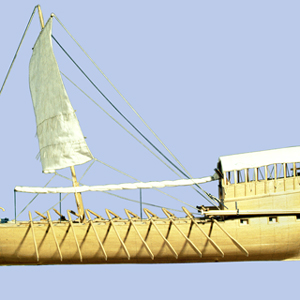

Meriwether Lewis listed a “Keeled Boat” in his pre-expedition shopping list, but after he finally got it, he and the other journalists of the Corps of Discovery simply called it “the boat” (190 times) or, less often, “the barge” (32 times).
Hidatsa Territory
Becoming the Fort Berthold Reservation


After leaving Fort Mandan on 7 April 1805, the expedition traveled for several days through Hidatsa territory. Much of that area would become the Fort Berthold Reservation of the Three Affiliated Tribes, a coalition of Hidatsa, Mandan, and Arikara.
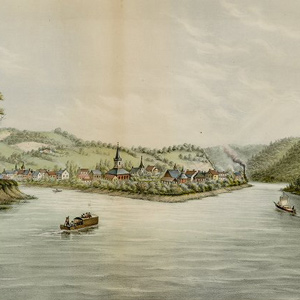

The Corps of Discovery, as it would be called, or the “corps of volunteers for North Western Discovery,” as Lewis put it, epitomized the rising glory of the United States—its sense of limitless possibilities and unparalleled opportunities.
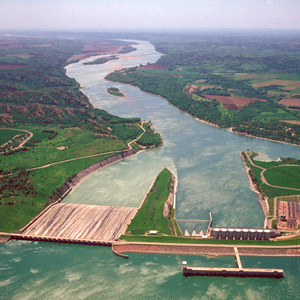

Here, Sergeant Gass went out with one of the hunters to retrieve the meat and hide of a buffalo the man killed the previous evening. The hunter had left his hat on the carcass “to keep off the vermin and beasts of prey,” apparently believing the scent of a human would scare them away”
September 11, 1804
Shannon found
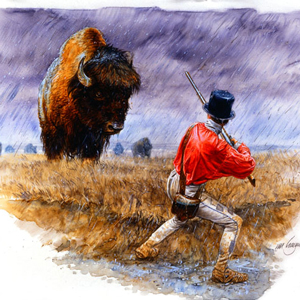

Rush Creek, SD The boats set out early and find George Shannon who has been missing for the past 22 days. John Ordway has a close encounter with a buffalo bull.
September 12, 1804
Troublesome Island
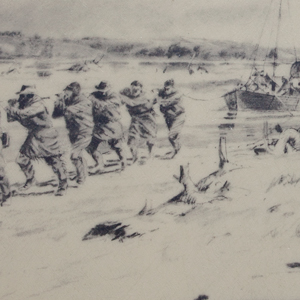

Troublesome Island, SD The boats go through a bend full of islands and shallow, braided channels causing the barge to nearly turn over. They then head up the wrong side of a large island and must turn back. Lewis botanizes.
September 14, 1804
Pronghorn and jackrabbit
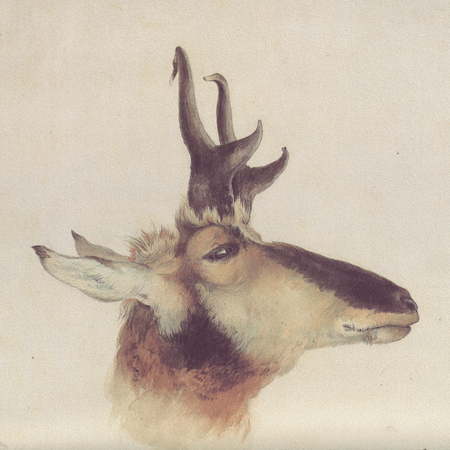

Below Oacoma, SD Clark kills a pronghorn and Shields a white-tailed jackrabbit. In his natural history notes, Lewis describes both and has them preserved. Clark searches unsuccessfully for an old volcano said to be in the area.
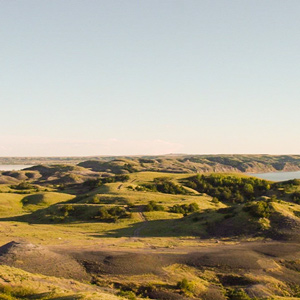

The huge meander called the Big Bend, or Grand Detour, had been a well-known Missouri River landmark for many years when the Corps of Discovery arrived at its lower bend on 19 September 1805.
September 21, 1804
Camp washes away
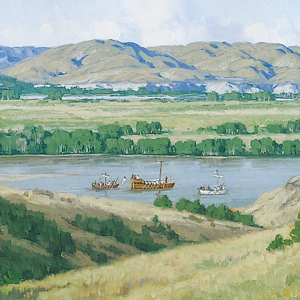

Below Joe Creek Bay, SD During the night, the men barely escape as the sandbar they are camping on washes into the river. Lewis preserves several plant specimens.
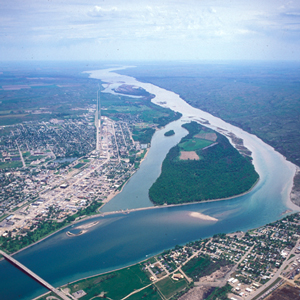

Lewis and Clark first met the Teton Sioux on 25 September 1804. One of Jefferson’s primary political objectives for the expedition was to create a peace treaty and trade agreement them, the most potent military and economic force on the lower Missouri.
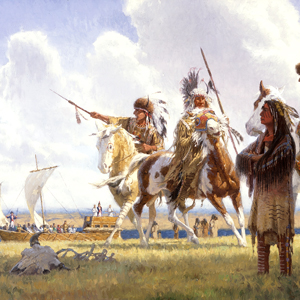

Ignorant of plains politics, Lewis and Clark barely averted disaster in their encounter with Black Buffalo’s people—an article by James P. Ronda from a keynote address to the Lewis and Clark Trail Heritage Foundation, Pierre, South Dakota, August 2002.
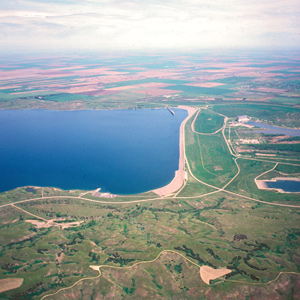

On the evening of 25 September 1804 after a negative encounter with the Lakota Sioux, the Corps camped on a nearby island Clark called “bad humered Island.” The next morning, the Indians had a change of heart.
September 26, 1804
Teton Sioux ceremony
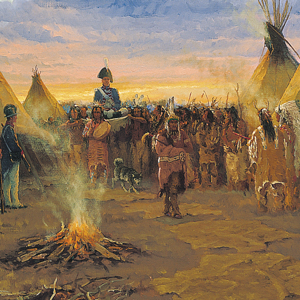

Pierre, SD Clark and Lewis are ceremoniously carried into a Lakota Sioux village where they are feted with food and music. Clark sees several recently-captured Omaha prisoners and asks for their return.
October 1, 1804
The Cheyenne River
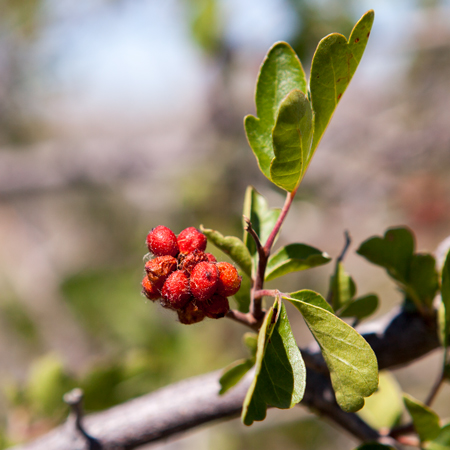

Little Bend Rec. Area, SD Upon reaching the Cheyenne River, Lewis and Clark meet fur trader Jean Vallé who tells them about that river. They notice the ash tree leaves are turning color, and Lewis adds three plant specimens to the collection.
October 6, 1804
Empty Arikara village
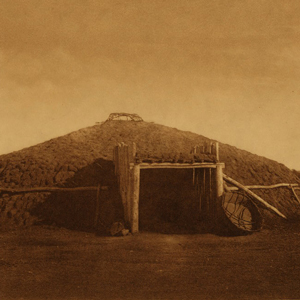

Swan Creek, SD The expedition comes to a recently inhabited Arikara village. They find bull boats, baskets, and a garden. On the river, the numerous channels make navigation difficult.
October 7, 1804
Grizzly bear tracks
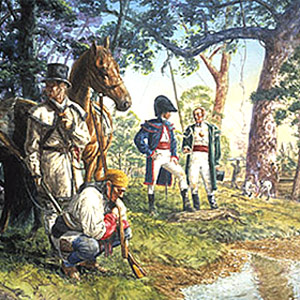

Below Mobridge, SD At the mouth of the Moreau Rive, the travelers their first grizzly bear tracks. They come across another empty Arikara village and camp above an island with many grouse.
October 10, 1804
An Arikara council
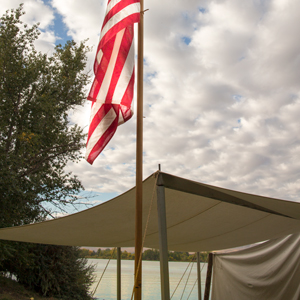

Arikara village Sawa-haini, SD Above present-day Mobridge, a council with the Arikaras is held, and the standard speeches and gifts are given. Clark appears a bit upset when York hams it up for the Indians.


The Corps observed an Indian strategy for hunting game. As men on horseback herded pronghorns—”goats or Antelope,” Clark called them—into the river, boys swam among them and killed some with sticks, while others on shore shot them with bows and arrows.
October 17, 1804
Too Né tells stories
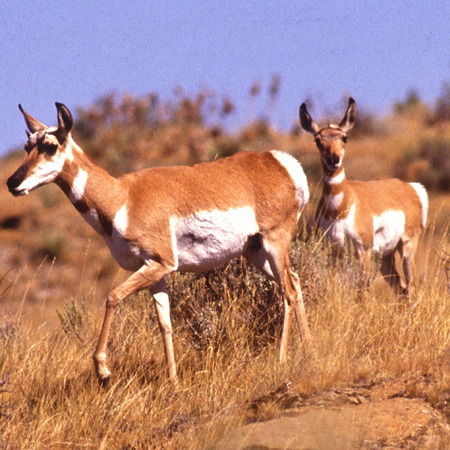

Cannon Ball, ND The men tow the boat six miles against a headwind and camp below the Cannonball River. Clark walks the shore with Chief Too Né who shares Arikara stories. Clark learns that pronghorns swim the river in a twice-yearly migration.
October 18, 1804
Passing the Cannonball
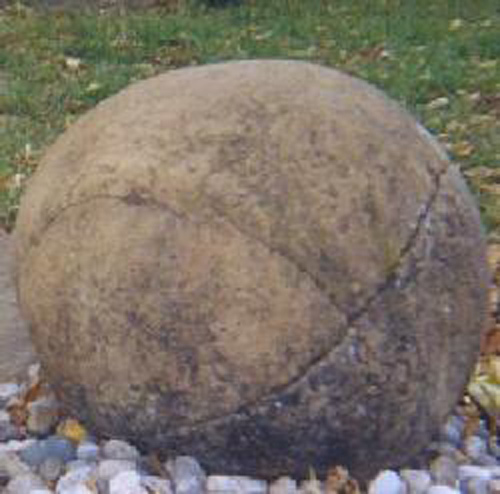

Fort Rice, ND Shortly after starting up the Missouri, they meet two traders who had recently been robbed. The two turn around and travel with the expedition. In passing the Cannonball River, a ‘cannon ball’ rock is selected for a new anchor.
October 20, 1804
Pursuits and escapes
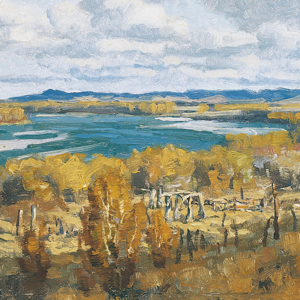

Heart River, ND Clark finds a Mandan village abandoned because of Sioux attacks. Pierre Cruzatte wounds a grizzly bear and a buffalo cow, and he is chased by both.


The Corps of Discovery arrived in the vicinity on 20 October 1804, having worked their way some 1,450 miles up the Missouri in 155 days. That day, wildlife was the main attraction.
October 24, 1804
Mandan-Arikara council
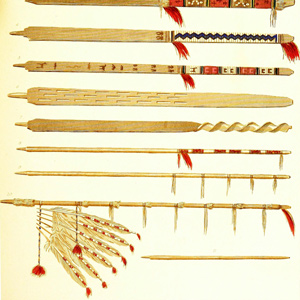

Washburn, ND The morning brings snow and rain as the boats make seven more miles up the Missouri reaching a Mandan camp. The captains, Too Né, and a Mandan chief meet with ceremony and smoking.
October 27, 1804
Ruptáre Village
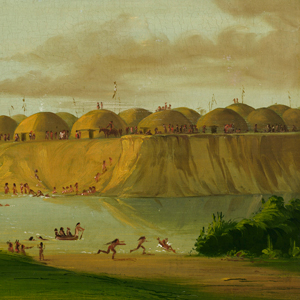

Ruptáre, second Mandan village, ND The expedition travels four miles among a complex of Mandan and Hidatsa villages. They find René Jusseaume living there and hire him as an interpreter.
October 30, 1804
Meeting Chief Sheheke
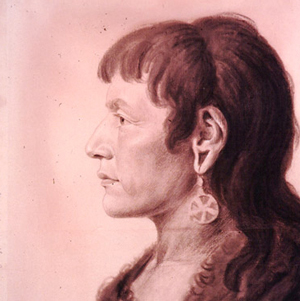

Ruptáre, second Mandan village, ND Indians not at yesterday’s council, including Chief Sheheke, arrive to see what they have missed. Clark and eight men head up the river in search of a place to build a fort for the winter.
November 1, 1804
Dropping downriver
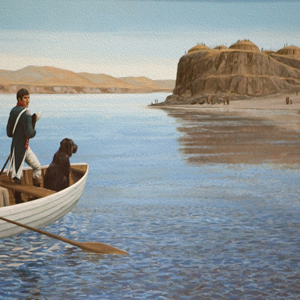

Ruptáre, second Mandan village, ND Clark takes a group down the river to find a suitable site for winter quarters. Lewis, with the main party, arrives at camp after dark.
